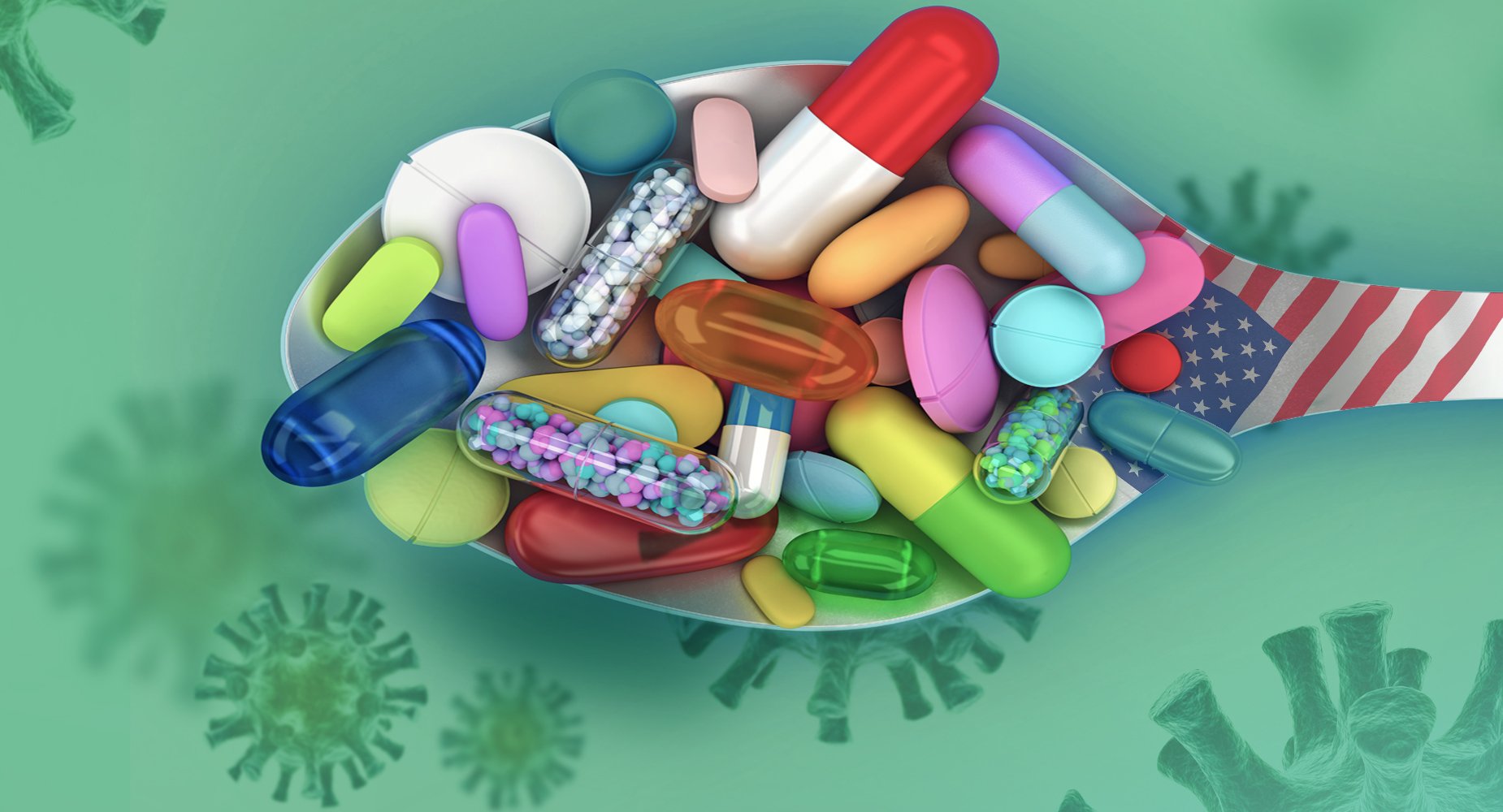Understanding the Pandemic’s Influence on the US Drug Epidemic from a Clinician’s Perspective
When the COVID-19 Pandemic started in early 2020, the nation was nearly a decade into battling a rapidly growing Prescription Opioids Misuse Epidemic. Just three years prior, the crisis had been named a public health emergency, but that had done little to slow down the increase of opioid misuse and overdose deaths.
As the Coronavirus traveled throughout the world and then mutated to continue its rampage, public health efforts were diverted to understanding the emerging disease while protecting people from its devastating impact. Workplaces, schools, stores, and treatment centers were shut down in an effort to halt or at least slow down the spread of COVID.
The widespread disruption fanned the flames of the US Drug Epidemic. Opioid misuse grew with increased stress, reduced access to support services and a shift in drug availability. Overdose rates reflected the spread of drug abuse across demographics. While the pandemic has subsided, the changes in patterns and habits persist as the public health agenda shifts back to a focus on curbing opioid misuse.
The impact of increases in substance misuse has been amplified by the increased use of synthetic illicit drugs such as Fentanyl or benzodiazepines which are illicitly manufactured. New substances appear in the market before law enforcement or the medical community is aware of their existence. Even if a substance is known, clinicians may find that too often the laboratories they rely on to ensure patient compliance do not have tests that detect the prevailing forms of synthetically manufactured drugs. Moreover, while payor policies require a preliminary drug screen as a first indication of compliance, these preliminary screens, referred to as immunoassay screens, are ineffective in detecting many street drugs. However, the complexity of testing, some laboratories are finding more advanced ways to monitor and safeguard patients.
The Pre-Pandemic US Drug Epidemic

Opioid misuse emerged as a concern in the 1990s around when the Food and Drug Administration (FDA) approved the powerful pain reliever OxyContin. This triggered what is considered to be the first wave of deaths linked to the misuse of legal prescription opioids.
A second wave swept the nation in 2010 with rapid increases in deaths due to Heroin. The third wave came just three years later with more deaths due to synthetic opioids like fentanyl.
Pharmaceutical fentanyl can be used effectively to treat severe pain related to complex pain conditions such as for cancer. It is up to 50 times stronger than heroin and 100 times stronger than morphine. With its increased use, illicitly manufactured fentanyl also became more available. It is commonly added to other drugs making them cheaper, more powerful, and more addictive.
Fueled by the advent of synthetic opioids, the number of overdose deaths nearly doubled between 2017 and 2018. In 2020, there were 93,331 overdose deaths, a 32% increase from the year prior. During this time deaths attributed to heroin declined, but deaths due to heroin in combination with synthetic opioids climbed.
A Nation on Lockdown
The first reports of a mysterious new illness came in late 2019. By March, communities were instituting stay-at-home or shelter-in-place orders. This spread into widespread shutdowns of workplaces, schools, stores, and health centers.
The halt of daily routines created a perfect storm of increased risk factors for drug misuse. Stress levels soared as people lost jobs or were unable to work. Overwhelming fears about not being able to pay bills or buy food emerged. Individuals were increasingly alone as traditional support systems crumbled. Treatment centers were thrown into disarray with uncertainty over how to provide services while managing the risk of COVID-19. A stream of illicit fentanyl hitting the streets grew into a torrent.
The opioid crisis and COVID-19 intersected creating unprecedented challenges for families and communities, according to the Centers for Disease Control. Opioids act as immune suppressants, which leaves users more susceptible to COVID-19. At the same time, COVID-19 could reduce lung capacity, which is known to increase the risk of a fatal overdose.
The number of overdose deaths, which had been increasing just prior to the pandemic, hit an all-time high of 81,000 in the 12 months ending in May 2020, a 38% increase over the prior 12 months. By 2021, the number of deaths reached 107,622.
Opioid Misuse Post-Pandemic Emergency
While businesses were still operating remotely and children were attending school on Zoom, the treatment centers adapted and found new ways to provide services. There was a burst of telehealth that increased the availability and reach of treatment reducing disparities across the country. Regulations were relaxed allowing for home delivery of key treatment medications.
Those changes combined with a reduction in risk factors as offices opened up and students returned to their classrooms. Subsequently, the number of overdose deaths declined, though the rate was still 50 percent higher than pre-pandemic levels.
The ongoing increase in drug-related fatalities is driven by the use of illicitly manufactured fentanyl and similar substances. The use of opioids in conjunction with psychostimulants has continued an upward trend.
Clinicians Monitoring Patients More Closely
As the opioid epidemic continues, physicians and other healthcare providers face an added challenge in protecting and promoting the health of their patients.
The continued increase in drug misuse calls for close monitoring of patients at risk. The National Institute on Drug Abuse considers doctors to have a crucial role in identifying and preventing the nonmedical use of prescription drugs.
By asking about all drugs, physicians can help patients recognize whether a problem exists, according to the NIDA. Additionally, evidence-based screening tools for the nonmedical use of prescription drugs can be incorporated into routine visits.
For those taking medications, NIDA urges doctors to take note of rapid increases in the amount of medication needed or frequent, unscheduled refill requests.
The diagnostic challenges and opportunities
To adapt and stay ahead of the rapidly changing substance use trends, laboratories must invest in research and development and leverage technological innovation.
To accurately identify new synthetic drugs, laboratories must stay informed about emerging trends, knowledge-share with law enforcement and other agencies, characterize new compounds for testing, and develop analytical methods to accurately detect and quantify substances. Testing menus cannot stagnate as drug dealers become more sophisticated. The importance of research for laboratories that perform clinical toxicology testing cannot be overstated. Acutis has made this a top priority.
“Our research and development function is set up to programmatically evaluatethe effectiveness of our testing menu and adapt with new assays that also pass the standards of the New York Department of Health,” explained Marjorie Bon Homme, PhD, Chief Scientist for clinical toxicology at Acutis Diagnostics.
Laboratories must also pursue technological innovations. Traditional enzyme immunoassay tests that are used for preliminary screening miss substances due to poor cross-reactivity and high cut-off values. The missed substances and false positives result in poor clinical outcomes.
While issues with enzyme immunoassay screening are well known within the scientific community, payor guidelines insist that a preliminary screen is performed prior to a confirmatory test using the more advanced liquid-chromatography mass spectrometry (LC-MS/MS) test.
The LC-MS/MS screening technology developed by Acutis eliminates issues with substances being missed in traditional EIA screening. Whereas the LC-MS/MS is more widely adopted for confirmatory testing, Acutis has developed a novel approach to perform preliminary screening using this more advanced technology.
Physicians now have access to more sensitive screening options that are timely and can easily be integrated with patient care and a patient care monitoring program.


